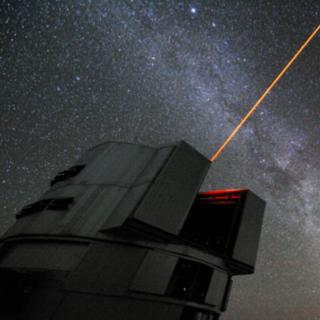Bibcode
Cicuéndez, L.; Battaglia, G.; Irwin, M.; Bermejo-Climent, J. R.; McMonigal, B.; Bate, N. F.; Lewis, G. F.; Conn, A. R.; de Boer, T. J. L.; Gallart, C.; Guglielmo, M.; Ibata, R.; McConnachie, A.; Tolstoy, E.; Fernando, N.
Referencia bibliográfica
Astronomy and Astrophysics, Volume 609, id.A53, 22 pp.
Fecha de publicación:
1
2018
Revista
Número de citas
32
Número de citas referidas
30
Descripción
Aims: We present results from deep and very spatially extended
CTIO/DECam g and r photometry (reaching out to 2 mag below the oldest
main-sequence turn-off and covering 20 deg2) around the
Sextans dwarf spheroidal galaxy. We aim to use this dataset to study the
structural properties of Sextans overall stellar population and its
member stars in different evolutionary phases, as well as to search for
possible signs of tidal disturbance from the Milky Way, which would
indicate departure from dynamical equilibrium. Methods: We
performed the most accurate and quantitative structural analysis to-date
of Sextans' stellar components by applying Bayesian Monte Carlo Markov
chain methods to the individual stars' positions. Surface density maps
are built by statistically decontaminating the sample through a matched
filter analysis of the colour-magnitude diagram, and then analysed for
departures from axisymmetry. Results: Sextans is found to be
significantly less spatially extended and more centrally concentrated
than early studies suggested. No statistically significant distortions
or signs of tidal disturbances were found down to a surface brightness
limit of 31.8 mag/arcsec2 in V-band. We identify an
overdensity in the central regions that may correspond to previously
reported kinematic substructure(s). In agreement with previous findings,
old and metal-poor stars such as Blue Horizontal Branch stars cover a
much larger area than stars in other evolutionary phases, and bright
Blue Stragglers (BSs) are less spatially extended than faint ones.
However, the different spatial distribution of bright and faint BSs
appears consistent with the general age and metallicity gradients found
in Sextans' stellar component. This is compatible with Sextans BSs
having formed by evolution of binaries and not necessarily due to the
presence of a central disrupted globular cluster, as suggested in the
literature. We provide structural parameters for the various populations
analysed and make publicly available the photometric catalogue of
point-sources as well as a catalogue of literature spectroscopic
measurements with updated membership probabilities.
Full Tables 2 and 6 are only available at the CDS via anonymous ftp to
http://cdsarc.u-strasbg.fr (http://130.79.128.5) or via http://cdsarc.u-strasbg.fr/viz-bin/qcat?J/A+A/609/A53
Proyectos relacionados

Evolución Galáctica en el Grupo Local
La formación y evolución de galaxias es un problema fundamental en Astrofísica. Su estudio requiere “viajar atrás en el tiempo”, para lo cual hay dos enfoques complementarios. El mas extendido consiste en analizar las propiedades de las galaxias a diferentes distancias cosmológicas. Nuestro equipo se concentra en el otro enfoque, denominado
Emma
Fernández Alvar